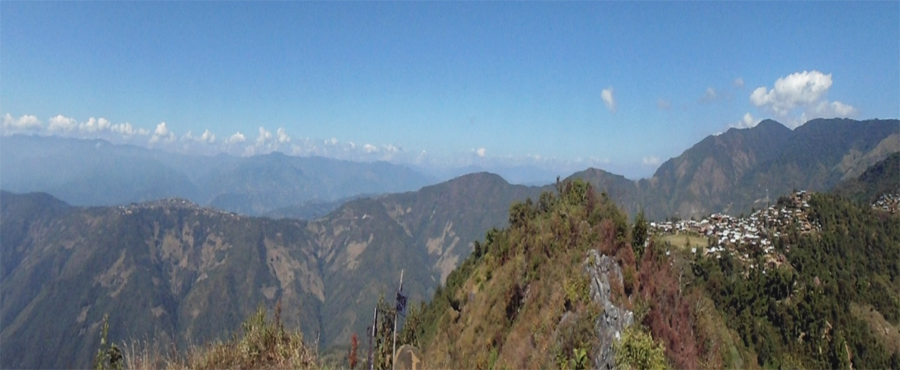Naga Hill Ophiolite in Nagaland joins India’s UNESCO tentative list, highlighting unique geology, biodiversity, and cultural significance.
Share

KOHIMA — The Naga Hill Ophiolite in Kiphire district has been included in India’s seven new submissions to the tentative list of the UNESCO World Heritage Convention under natural category.
According to the UNESCO website, India submitted the seven properties on August 27. The list includes: Deccan Traps at Panchgani and Mahabaleshwar (Maharashtra); Geological Heritage of St. Mary’s Island Cluster (Udupi, Karnataka); Meghalayan Age Caves (East Khasi Hills, Meghalaya); Naga Hill Ophiolite (Nagaland); Natural Heritage of Erra Matti Dibbalu (Visakhapatnam, Andhra Pradesh); Natural Heritage of Tirumala Hills (Tirupati, Andhra Pradesh); and Natural Heritage of Varkala (Kerala).
With this, India now has 69 sites on the tentative list—49 cultural, 3 mixed and 17 natural.
Naga Hill Ophiolite
Ophiolites are slices of oceanic plate thrust onto continental plates, offering valuable insights into mid-ocean ridge processes. The Naga Hill Ophiolite, near Pungro in Kiphire district, has already been declared a National Geological Monument by the Geological Survey of India.
Also read: Nagaland: Heritage and potential drive Tseminyu’s journey as 13th district
The submission describes it as an exceptional example of oceanic lithosphere obducted onto continental crust, providing a complete ophiolitic sequence of Mesozoic to Cenozoic rocks. Situated at the India-Myanmar tectonic boundary, the site is considered a rare geological province for understanding plate tectonics, continental collision, and orogenic processes.
Complementing its geological significance is its ecological and cultural value. The site overlaps with Fakim Wildlife Sanctuary and several community reserves, part of one of the world’s 18 mega biodiversity hotspots.
It is home to endangered species such as the Rufous-necked Hornbill and Blyth’s Tragopan, while also sustaining traditional Naga oral traditions and community-based conservation practices.
A comparison with other similar properties was also made, noting that the Naga Hill Ophiolite is a unique geological province within the Indo-Myanmar Orogenic Belt, providing invaluable insight into the evolution of oceanic lithosphere, arc-continent collision, and the broader dynamics of the Indian-Eurasian plate convergence zone.
Read more: ‘Naga Hills Ophiolite’ near Pungro identified as geoheritage site
Its exposure at the surface makes it a natural geological laboratory, contributing significantly to the understanding of Earth’s structural history, mantle-crust relationships, and orogenic processes.
Comparative value
In its justification, India compared the Naga Hill Ophiolite to three globally recognised World Heritage sites, including Macquarie Island (Australia), which is the only known location where rocks from the oceanic crust and upper mantle are actively exposed above sea level. While Macquarie reflects ridge uplift, Naga Ophiolite represents a rare obducted sequence in a continental collision zone.
It also cited Tongariro National Park in New Zealand, where geological features are closely tied to Māori cultural traditions, similar to the way Naga oral traditions and customary practices connect to the ophiolite landscape.
In addition, it pointed to the Dja Faunal Reserve in Cameroon, where biodiversity is shaped by underlying geological processes, echoing the unique ecosystems supported by the mineral-rich terrain of the Naga Hills.
According to the submission, the site qualifies under UNESCO Criterion (viii) for its geological significance and Criterion (v) for its cultural landscape.
If accepted, the Naga Hill Ophiolite would be the first site from Nagaland to be inscribed under the UNESCO World Heritage Convention.
Read EM exclusive: Voice from the margins: Naga artist Temsüyanger Longkumer’s quest for cultural representation